 Technology peripherals
Technology peripherals
 AI
AI
 First article: A new paradigm for training multi-view 3D occupancy models using only 2D labels
First article: A new paradigm for training multi-view 3D occupancy models using only 2D labels
First article: A new paradigm for training multi-view 3D occupancy models using only 2D labels
This article is reprinted with the authorization of the Autonomous Driving Heart public account. Please contact the source for reprinting.
[RenderOcc, the first new paradigm for training multi-view 3D occupancy models using only 2D labels] The author extracts NeRF-style 3D volume representations from multi-view images and uses volume rendering techniques to build 2D reconstructions, thus Enables direct 3D supervision from 2D semantic and depth labels, reducing reliance on expensive 3D occupancy annotations. Extensive experiments show that RenderOcc performs comparably to fully supervised models using 3D labels, highlighting the importance of this approach in real-world applications. Already open source.
Title: RenderOcc: Vision-Centric 3D Occupancy Prediction with 2DRendering Supervision
Author affiliation: Peking University, Xiaomi Automobile, Hong Kong Chinese MMLAB
The content that needs to be rewritten is: Open source address: GitHub - pmj110119/RenderOcc
3D occupancy prediction has important prospects in the fields of robot perception and autonomous driving, which quantifies 3D scenes into grid cells with semantic labels. Recent work mainly utilizes complete occupancy labels in 3D voxel space for supervision. However, expensive annotation processes and sometimes ambiguous labels severely limit the usability and scalability of 3D occupancy models. To solve this problem, the authors propose RenderOcc, a new paradigm for training 3D occupancy models using only 2D labels. Specifically, we extract NeRF-style 3D volumetric representations from multi-view images and use volume rendering techniques to build 2D reconstructions, enabling direct 3D supervision from 2D semantic and depth labels. In addition, the authors introduce an auxiliary ray method to solve the sparse viewpoint problem in autonomous driving scenes, which utilizes sequential frames to build a comprehensive 2D rendering for each target. RenderOcc is the first attempt to train a multi-view 3D occupancy model using only 2D labels, reducing the reliance on expensive 3D occupancy annotations. Extensive experiments show that RenderOcc performs comparably to fully supervised models using 3D labels, highlighting the importance of this approach in real-world applications.
Network structure:
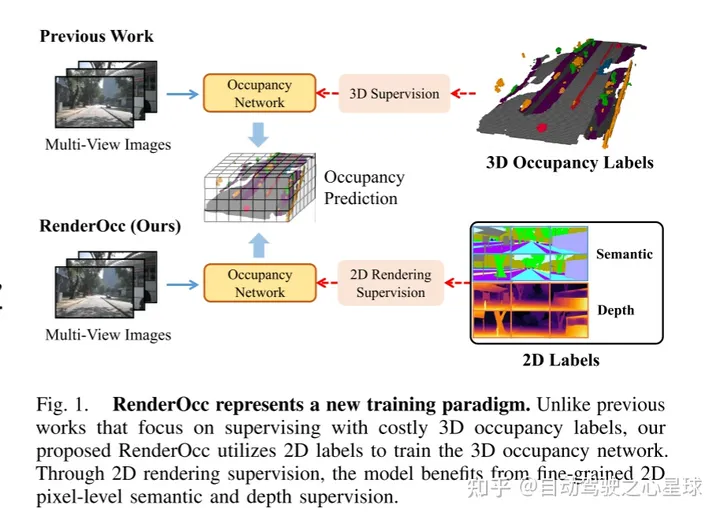
Figure 1 shows a new training method for RenderOcc. Different from previous methods that rely on expensive 3D occupancy labels for supervision, the RenderOcc proposed in this paper utilizes 2D labels to train the 3D occupancy network. With 2D rendering supervision, the model is able to benefit from fine-grained 2D pixel-level semantics and depth supervision
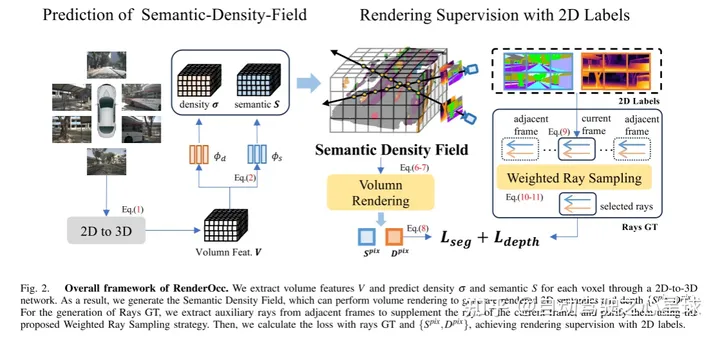
Figure 2. Overall framework of RenderOcc. This paper extracts volumetric features through a 2D to 3D network and predicts the density and semantics of each voxel. Therefore, this paper generates a Semantic Density Field, which can perform volume rendering to generate rendered 2D semantics and depth. For the generation of Rays GT, this paper extracts auxiliary rays from adjacent frames to supplement the rays of the current frame and uses the proposed weighted ray sampling strategy to purify them. Then, this article uses ray GT and {} to calculate the loss to achieve rendering supervision of 2D labels
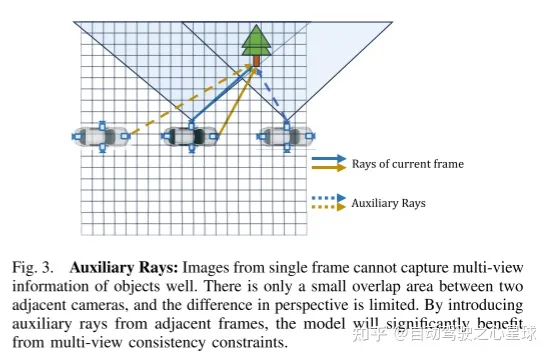
Rewritten content: Figure 3. Auxiliary light: A single frame image cannot capture the multi-view information of the object well. There is only a small overlap area between adjacent cameras and the difference in viewing angle is limited. By introducing auxiliary rays from adjacent frames, the model can significantly benefit from multi-view consistency constraints
Experimental results:




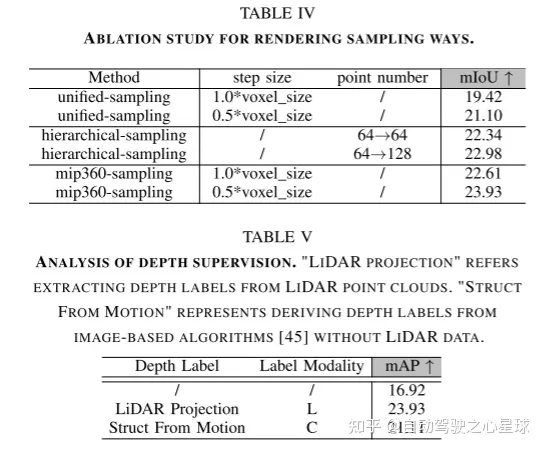

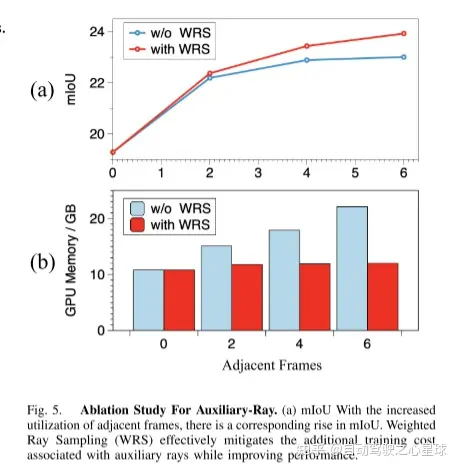
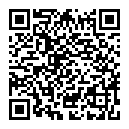
The content that needs to be rewritten is: Original link: https://mp.weixin.qq.com/s/WzI8mGoIOTOdL8irXrbSPQ
The above is the detailed content of First article: A new paradigm for training multi-view 3D occupancy models using only 2D labels. For more information, please follow other related articles on the PHP Chinese website!

Hot AI Tools

Undresser.AI Undress
AI-powered app for creating realistic nude photos

AI Clothes Remover
Online AI tool for removing clothes from photos.

Undress AI Tool
Undress images for free

Clothoff.io
AI clothes remover

AI Hentai Generator
Generate AI Hentai for free.

Hot Article

Hot Tools

Notepad++7.3.1
Easy-to-use and free code editor

SublimeText3 Chinese version
Chinese version, very easy to use

Zend Studio 13.0.1
Powerful PHP integrated development environment

Dreamweaver CS6
Visual web development tools

SublimeText3 Mac version
God-level code editing software (SublimeText3)

Hot Topics
 1384
1384
 52
52
 The world's most powerful open source MoE model is here, with Chinese capabilities comparable to GPT-4, and the price is only nearly one percent of GPT-4-Turbo
May 07, 2024 pm 04:13 PM
The world's most powerful open source MoE model is here, with Chinese capabilities comparable to GPT-4, and the price is only nearly one percent of GPT-4-Turbo
May 07, 2024 pm 04:13 PM
Imagine an artificial intelligence model that not only has the ability to surpass traditional computing, but also achieves more efficient performance at a lower cost. This is not science fiction, DeepSeek-V2[1], the world’s most powerful open source MoE model is here. DeepSeek-V2 is a powerful mixture of experts (MoE) language model with the characteristics of economical training and efficient inference. It consists of 236B parameters, 21B of which are used to activate each marker. Compared with DeepSeek67B, DeepSeek-V2 has stronger performance, while saving 42.5% of training costs, reducing KV cache by 93.3%, and increasing the maximum generation throughput to 5.76 times. DeepSeek is a company exploring general artificial intelligence
 AI subverts mathematical research! Fields Medal winner and Chinese-American mathematician led 11 top-ranked papers | Liked by Terence Tao
Apr 09, 2024 am 11:52 AM
AI subverts mathematical research! Fields Medal winner and Chinese-American mathematician led 11 top-ranked papers | Liked by Terence Tao
Apr 09, 2024 am 11:52 AM
AI is indeed changing mathematics. Recently, Tao Zhexuan, who has been paying close attention to this issue, forwarded the latest issue of "Bulletin of the American Mathematical Society" (Bulletin of the American Mathematical Society). Focusing on the topic "Will machines change mathematics?", many mathematicians expressed their opinions. The whole process was full of sparks, hardcore and exciting. The author has a strong lineup, including Fields Medal winner Akshay Venkatesh, Chinese mathematician Zheng Lejun, NYU computer scientist Ernest Davis and many other well-known scholars in the industry. The world of AI has changed dramatically. You know, many of these articles were submitted a year ago.
 Google is ecstatic: JAX performance surpasses Pytorch and TensorFlow! It may become the fastest choice for GPU inference training
Apr 01, 2024 pm 07:46 PM
Google is ecstatic: JAX performance surpasses Pytorch and TensorFlow! It may become the fastest choice for GPU inference training
Apr 01, 2024 pm 07:46 PM
The performance of JAX, promoted by Google, has surpassed that of Pytorch and TensorFlow in recent benchmark tests, ranking first in 7 indicators. And the test was not done on the TPU with the best JAX performance. Although among developers, Pytorch is still more popular than Tensorflow. But in the future, perhaps more large models will be trained and run based on the JAX platform. Models Recently, the Keras team benchmarked three backends (TensorFlow, JAX, PyTorch) with the native PyTorch implementation and Keras2 with TensorFlow. First, they select a set of mainstream
 Hello, electric Atlas! Boston Dynamics robot comes back to life, 180-degree weird moves scare Musk
Apr 18, 2024 pm 07:58 PM
Hello, electric Atlas! Boston Dynamics robot comes back to life, 180-degree weird moves scare Musk
Apr 18, 2024 pm 07:58 PM
Boston Dynamics Atlas officially enters the era of electric robots! Yesterday, the hydraulic Atlas just "tearfully" withdrew from the stage of history. Today, Boston Dynamics announced that the electric Atlas is on the job. It seems that in the field of commercial humanoid robots, Boston Dynamics is determined to compete with Tesla. After the new video was released, it had already been viewed by more than one million people in just ten hours. The old people leave and new roles appear. This is a historical necessity. There is no doubt that this year is the explosive year of humanoid robots. Netizens commented: The advancement of robots has made this year's opening ceremony look like a human, and the degree of freedom is far greater than that of humans. But is this really not a horror movie? At the beginning of the video, Atlas is lying calmly on the ground, seemingly on his back. What follows is jaw-dropping
 KAN, which replaces MLP, has been extended to convolution by open source projects
Jun 01, 2024 pm 10:03 PM
KAN, which replaces MLP, has been extended to convolution by open source projects
Jun 01, 2024 pm 10:03 PM
Earlier this month, researchers from MIT and other institutions proposed a very promising alternative to MLP - KAN. KAN outperforms MLP in terms of accuracy and interpretability. And it can outperform MLP running with a larger number of parameters with a very small number of parameters. For example, the authors stated that they used KAN to reproduce DeepMind's results with a smaller network and a higher degree of automation. Specifically, DeepMind's MLP has about 300,000 parameters, while KAN only has about 200 parameters. KAN has a strong mathematical foundation like MLP. MLP is based on the universal approximation theorem, while KAN is based on the Kolmogorov-Arnold representation theorem. As shown in the figure below, KAN has
 Tesla robots work in factories, Musk: The degree of freedom of hands will reach 22 this year!
May 06, 2024 pm 04:13 PM
Tesla robots work in factories, Musk: The degree of freedom of hands will reach 22 this year!
May 06, 2024 pm 04:13 PM
The latest video of Tesla's robot Optimus is released, and it can already work in the factory. At normal speed, it sorts batteries (Tesla's 4680 batteries) like this: The official also released what it looks like at 20x speed - on a small "workstation", picking and picking and picking: This time it is released One of the highlights of the video is that Optimus completes this work in the factory, completely autonomously, without human intervention throughout the process. And from the perspective of Optimus, it can also pick up and place the crooked battery, focusing on automatic error correction: Regarding Optimus's hand, NVIDIA scientist Jim Fan gave a high evaluation: Optimus's hand is the world's five-fingered robot. One of the most dexterous. Its hands are not only tactile
 FisheyeDetNet: the first target detection algorithm based on fisheye camera
Apr 26, 2024 am 11:37 AM
FisheyeDetNet: the first target detection algorithm based on fisheye camera
Apr 26, 2024 am 11:37 AM
Target detection is a relatively mature problem in autonomous driving systems, among which pedestrian detection is one of the earliest algorithms to be deployed. Very comprehensive research has been carried out in most papers. However, distance perception using fisheye cameras for surround view is relatively less studied. Due to large radial distortion, standard bounding box representation is difficult to implement in fisheye cameras. To alleviate the above description, we explore extended bounding box, ellipse, and general polygon designs into polar/angular representations and define an instance segmentation mIOU metric to analyze these representations. The proposed model fisheyeDetNet with polygonal shape outperforms other models and simultaneously achieves 49.5% mAP on the Valeo fisheye camera dataset for autonomous driving
 The latest from Oxford University! Mickey: 2D image matching in 3D SOTA! (CVPR\'24)
Apr 23, 2024 pm 01:20 PM
The latest from Oxford University! Mickey: 2D image matching in 3D SOTA! (CVPR\'24)
Apr 23, 2024 pm 01:20 PM
Project link written in front: https://nianticlabs.github.io/mickey/ Given two pictures, the camera pose between them can be estimated by establishing the correspondence between the pictures. Typically, these correspondences are 2D to 2D, and our estimated poses are scale-indeterminate. Some applications, such as instant augmented reality anytime, anywhere, require pose estimation of scale metrics, so they rely on external depth estimators to recover scale. This paper proposes MicKey, a keypoint matching process capable of predicting metric correspondences in 3D camera space. By learning 3D coordinate matching across images, we are able to infer metric relative



